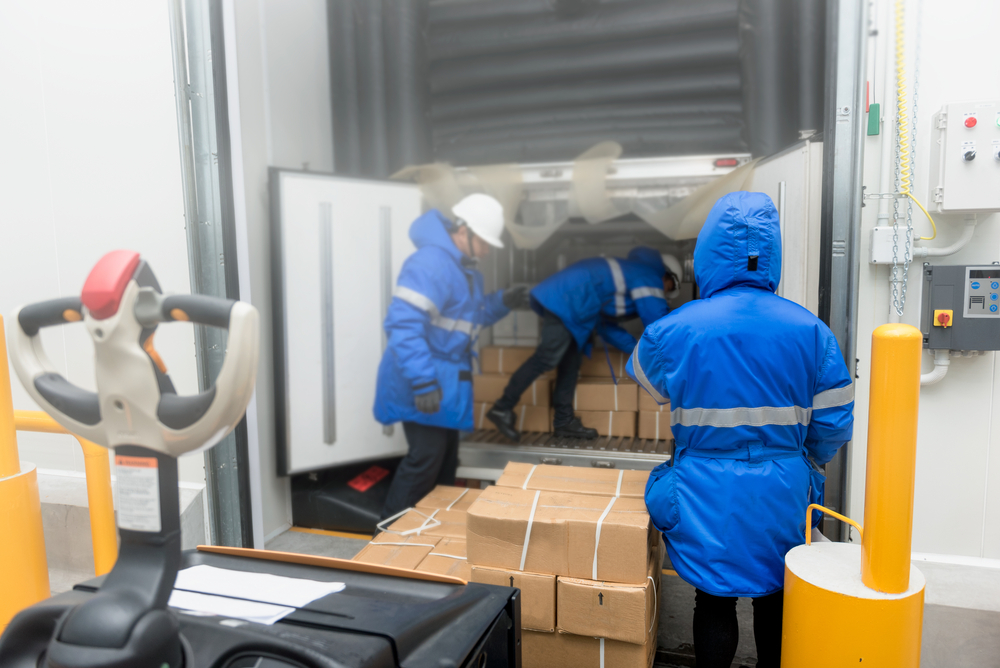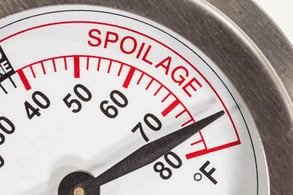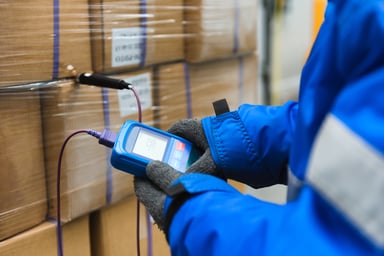3 Major Risks in the Global Cold Chain and How to Mitigate Them

The global cold chain logistics market is likely projected to grow at a 17.9% compound annual growth rate through 2026. Cold chains are an integral part of the global supply chain and logistics networks. Everything from produce to medicines and now even the COVID-19 vaccines need cold chains to be ferried. But while every industry needs efficient cold chains, there is also a lot of pressure that these systems function optimally, keeping in mind business goals.
Cold or temperature-controlled supply chains face typical supply chain and logistics disruptions like lack of infrastructure, workforce shortages, and port congestion. But these issues are exacerbated when it comes to cold chains. Meanwhile, cold chains face other issues like supplier risk, inadequate packaging, global black swan events or weather disruptions, improper handling, and more.
Socio-political unrest, labour shortages, wars, geological events, and pandemic concerns are just a few of the events that could affect changes in shipping patterns and logistics strategies. But supply chain volatility aside, some factors are detrimental to successful cold chains. Inefficient cold chains lead to massive amounts of food wastage and financial consequences.
What are the Major Challenges Faced by Cold Chains?
1. Damaged Cold Chain Storage Solutions
 Cold chains are defined as temperature controlled. But when cold-chain containers are damaged in any way, products stored inside are likely to spoil quickly. Anything from damaged freezer doors to condensation, excessive heating, and microbial growth can adversely affect stock. This can directly result in a loss for any stakeholders involved.
Cold chains are defined as temperature controlled. But when cold-chain containers are damaged in any way, products stored inside are likely to spoil quickly. Anything from damaged freezer doors to condensation, excessive heating, and microbial growth can adversely affect stock. This can directly result in a loss for any stakeholders involved.
This damaged cold storage will lead to spoiled products and be a safety hazard for workers. To mitigate the risk of this happening, it is imperative to keep track of these various factors that are a part of cold chain facilities. Companies can simply track how many times freezer doors are opened and closed using sensors or technology. Not only can potential risks be tracked, but these systems can also act as energy-saving mechanisms, directly affecting costs.
2. Increased Regulations on Cold Chains
Cold chains are expected to abide by regulations across the globe. These may be ecological laws and regulations or local laws at the port, including customs and compliance issues. Cold chains are high-power-consuming entities. Consumption of fossil fuels and refrigerant gases (hydrofluorocarbons or HFCs) in cold chains leads to high carbon emissions. A serious issue that many countries have different laws to tackle.
Global distribution practices and frameworks keep evolving, which can also challenge cold chain operators and shippers. Shippers and companies need to ensure that they do not end up paying high demurrage or running afoul of local laws.
Therefore, a simple way for companies to stay updated on laws and compliance rules is to use integrated cold chain transportation management services. Not only will this solve compliance issues, but it will also improve goods receiving efficiency, thus increasing profits. One such solution to look out for is the C3 yard management and dock scheduling suite, among other services.
To transform static logistics operations into dynamic flow-through centers, C3 offers online solutions that will help streamline cold chain operations and reduce costs simultaneously.
3. Supplier and Delivery Risks on Cold Chains
Cold chains may have good systems and infrastructure, but if the original product from the supplier is damaged, there isn’t much that can be done to ensure optimum operations. Suppliers might be working with untrained staff or may send out goods with faulty packaging. Some may end up sending out product that hasn’t been quality tested. All this can lead to losses for companies and cold chains.
 Finally, products may be harmed or mismanaged during distribution. While transported or stored in the distribution process, goods in cold chains are subject to various risks. There is the possibility of hardware or infrastructure turning out to be faulty. There might be a lack of equipment to transport goods at the right time. There might even be accidents and modal breakdowns to consider. Cold chains face a greater risk, especially in developing countries like Africa, where infrastructure is unavailable.
Finally, products may be harmed or mismanaged during distribution. While transported or stored in the distribution process, goods in cold chains are subject to various risks. There is the possibility of hardware or infrastructure turning out to be faulty. There might be a lack of equipment to transport goods at the right time. There might even be accidents and modal breakdowns to consider. Cold chains face a greater risk, especially in developing countries like Africa, where infrastructure is unavailable.
These risks can be anticipated and solved with the right digital tools. While companies dealing with cold chains have been working towards keeping cargo and products safe from a cold storage facility to the final destination, they must also mitigate the obvious risks. A simple method to do this is by focusing on streamlining all their operations in one place by using technology to overcome these challenges. BCG estimates that cold chain optimization technologies, especially in developing countries, could cut waste by $150 billion a year.
The great opportunity that cold chains have for growth can only be hacked in conjunction with technological advancement. Companies need to digitize their storage solutions and provide digital entry points that can keep track of various aspects of a cold chain. This will result in more efficient and highly accurate cold chains in the future.
If you are looking for tech solutions that can help mitigate these risks, you can start with C3 Solutions. With real-time location and condition monitoring solutions like this one, you can make the right decision. Whether it's to deploy personnel to fix a cold chain issue, re-route your shipment, or re-ship a replacement, so your customer is not affected. Book your demo today!
